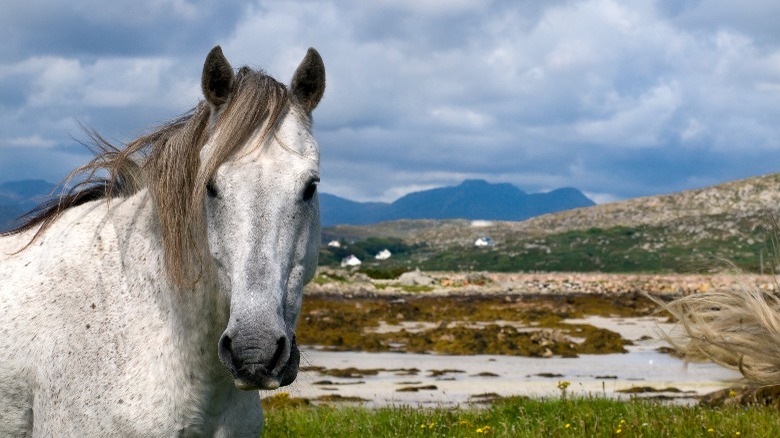Highlights of the landscape
Established in 1980, the Connemara National Park is comprised of lands once belonging to the Kylemore Abbey Estate, the Letterfrack Industrial School, and Richard “Humanity Dick” Martin — who helped to create the Society for the Prevention of Cruelty to Animals. Today, the best way to learn more about the park is to head to the Visitor Centre where guests can enjoy a free exhibition, which traces the history of the landscape, as well as a 20-minute film. In addition, on the official National Parks website, there are downloadable activity sheets on topics ranging from birds and butterflies to trees.
But what of those scenic mountain views? Well, the good news is that there are mountains dotted throughout the park — and more visible on the horizon. So, wherever you go, there is usually an alpine vista of some sort to see. From Benbaun and Bencullagh to Benbrack and Muckanaght, there’s no shortage of picturesque peaks here, with Insta opportunities galore.
In terms of climbing the mountains, although not very high, they can still be quite challenging, so they are recommended only for experienced hikers. Instead, a safer bet is to follow one of the park’s four official walking trails. For panoramic views of the mountains, the best one is undoubtedly the Upper Diamond Hill route. While traversing a hill rather than a mountain, this looped trail of 2.3 miles is nonetheless a steep and strenuous one, but worth it for the vista from the top.
More to explore at Connemara National Park

Beyond the mountains themselves, there is so much more to enjoy on a visit to Connemara National Park. Among the special fauna and flora here, the most prolific plant is the purple moor grass, which gives the landscape its distinctive lilac hue for much of the year. Also, be sure to look out for the various residents of the park, including badgers, pine martens, otters, red deer, and hares. There are also dozens of bird species — including the occasional peregrine falcon. Then, there’s the famous Connemara ponies ambling contentedly through the valleys.
The park is also home to a wide range of archaeological and historical sites, some dating back thousands of years, such as two megalithic tombs. On the northern border of the park is Kylemore Abbey, one of Ireland’s most popular tourist attractions, with its Victorian walled garden. Here, visitors can take a tour of the abbey’s interior and enjoy a relaxing stroll through the garden’s six acres.
On the practical side of things, the Connemara National Park is open year-round (weather pending), while the Visitor Centre is open daily from 9 a.m. to 5:30 p.m. The main access point is located near the village of Letterfrack along the N59. Admission to the park and Visitor Centre is free, and there is no charge for parking either. So, whether it’s mountain views, pristine nature or some Irish history you’re seeking, this European national park certainly comes highly recommended.

